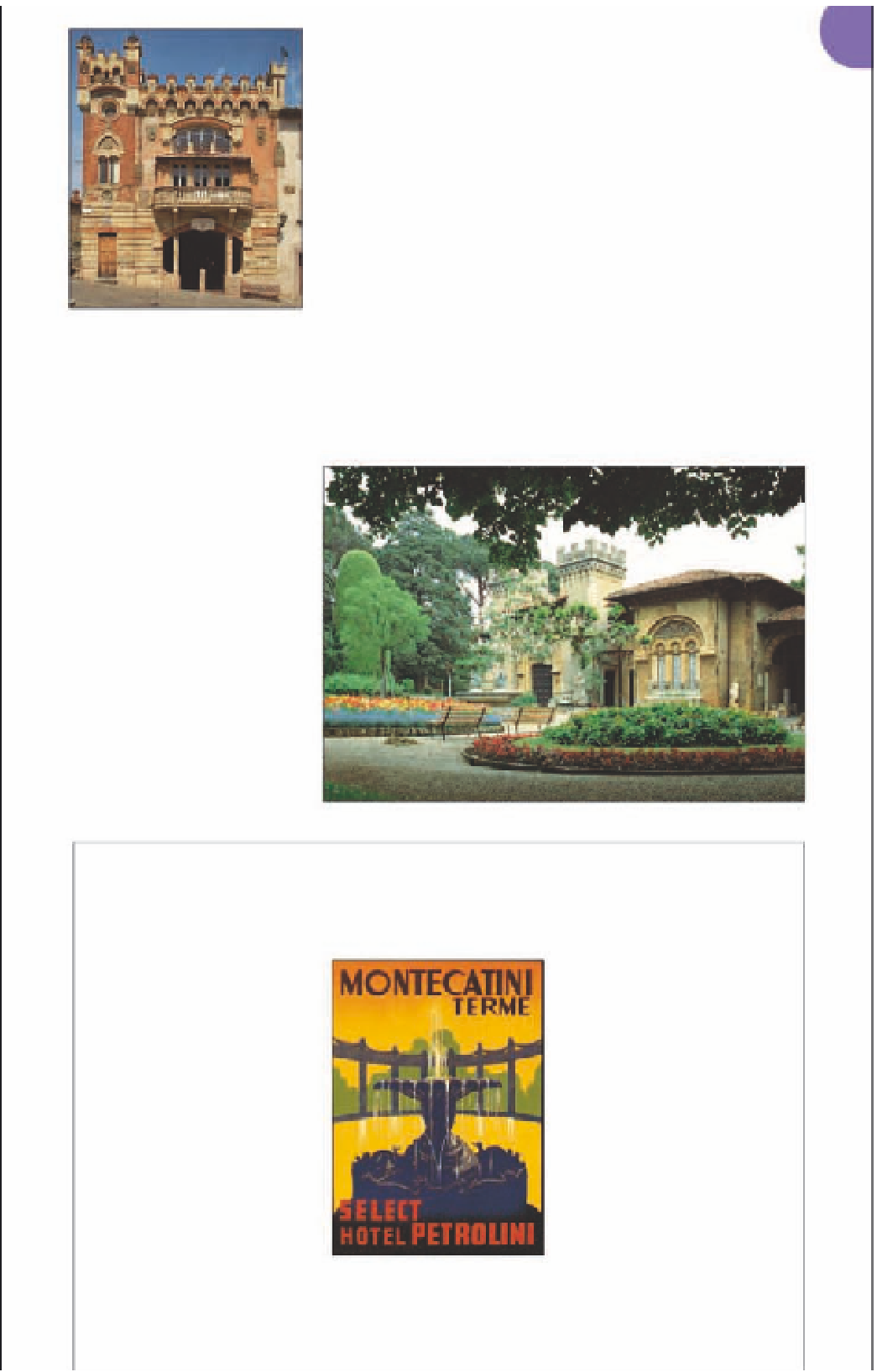Travel Reference
In-Depth Information
the funicular railway up to
the ancient fortified village of
Montecatini Alto. In the quiet
main piazza, there are antique
shops and well-regarded res-
taurants with outdoor tables.
From the Rocca (castle) you
can take in sweeping views
over the mountainous
countryside.
Nearby at Ponte Buggia-
nese, in
San Michele
church,
you can see modern frescoes
by the Florentine artist Pietro
Annigoni (1910-88) on the
theme of Christ's Passion.
At Monsummano Terme,
another of Tuscany's well
known spa towns, the
Grotta
Giusti
spa prescribes the
inhalation of vapours from
hot sulphurous springs found
in the nearby caves.
Above Monsummano
Terme is the fortified
hilltop village of Monsum-
mano Alto, with its ruined
castle. Today, few people live
in the sleepy village, with its
pretty 12th-century church
and crumbling houses, but
there are some fine views
from here.
R
San Michele
Ponte Buggianese.
#
by appointment.
P
Theatre building in Montecatini
Alto's main square
Grotta Giusti
Monsummano Terme.
Tel
0572 907 71.
#
encouraged the development
of Montecatini Terme in the
18th century.
The most splendid is the
Neo-Classical Terme Tettuccio
(1925-8) with its circular,
marble-lined pools, fountains
and Art Nouveau tiles depic-
ting languorous nymphs.
Terme Torretta, named after
its mock medieval tower, is
noted for its tea-time concerts,
while Terme Tamerici has
beautifully tended gardens.
Visitors can obtain day
tickets to the spas to drink
the waters and relax in the
reading, writing and music
rooms. More information is
available from the Direzione
delle Terme at Viale Verdi 41.
A popular excursion from
Montecatini Terme is to take
www
.grottagiustispa.com
9am-7pm daily.
&
The Terme Tamerici, built in Neo-Gothic style in the early 20th century
TAKING THE WATERS IN TUSCANY
The therapeutic value of bathing was first
recognized by the ancient Romans. They
were also the first to exploit the hot springs
of volcanic origin that they
found all over Tuscany. Here
they built bath complexes
where the army veterans who
settled in towns such as
Florence and Siena could
relax. Some of these spas, as
at Saturnia
(see p238)
, are still
called by their original
Roman names.
Other spas came into promi-
nence during the Middle Ages
and Renaissance: St Catherine
of Siena (1347-80)
(see p219)
,
who suffered from scrofula, a
form of tuberculosis, and
Lorenzo de' Medici (1449-92),
who was arthritic, both bathed in the
sulphurous hot springs at Bagno Vignoni
(see
p226)
to relieve their ailments. Tuscan spas
really came into their own in the early 19th
century when Bagni di Lucca was one of the
most fashionable spa centres in Europe,
frequented by emperors, kings and
aristocrats
(see p174)
.
However, spa culture in the
19th century had more to do
with social life: flirtation and
gambling took precedence
over health cures.
Today treatments such as
inhaling sulphur-laden steam,
drinking the mineral-rich
waters, hydro massage,
bathing and application of
mud packs are prescribed for
disorders ranging from liver
complaints to skin conditions
and asthma. Many visitors still
continue the tradition of
coming to fashionable spas
such as Montecatini Terme or
Monsummano Terme, not just for the bene-
fits of therapeutic treatment but also for
relaxation and in search of companionship.
1920s spa poster




































